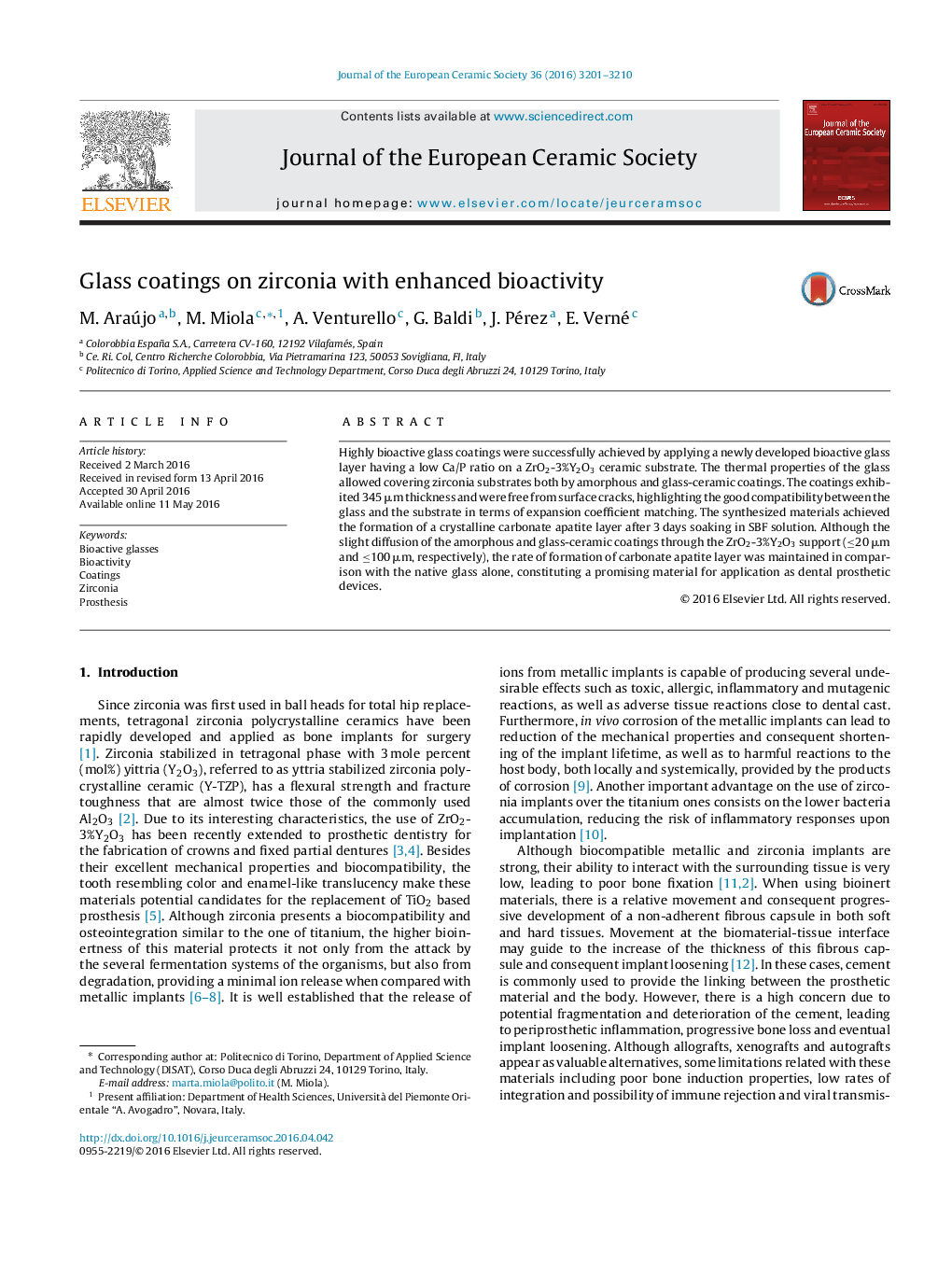| Article ID | Journal | Published Year | Pages | File Type |
|---|---|---|---|---|
| 1473660 | Journal of the European Ceramic Society | 2016 | 10 Pages |
Highly bioactive glass coatings were successfully achieved by applying a newly developed bioactive glass layer having a low Ca/P ratio on a ZrO2-3%Y2O3 ceramic substrate. The thermal properties of the glass allowed covering zirconia substrates both by amorphous and glass-ceramic coatings. The coatings exhibited 345 μm thickness and were free from surface cracks, highlighting the good compatibility between the glass and the substrate in terms of expansion coefficient matching. The synthesized materials achieved the formation of a crystalline carbonate apatite layer after 3 days soaking in SBF solution. Although the slight diffusion of the amorphous and glass-ceramic coatings through the ZrO2-3%Y2O3 support (≤20 μm and ≤100 μm, respectively), the rate of formation of carbonate apatite layer was maintained in comparison with the native glass alone, constituting a promising material for application as dental prosthetic devices.
